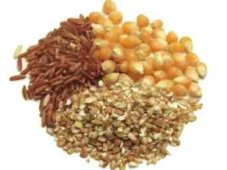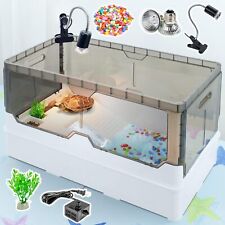Dog Food Ingredients: The 4 Essential Groups

"It may not be exactly how humans look at nutrition in terms of the food pyramid, but the four essential food groups that I think can apply to dogs and cats are proteins, carbohydrates, fats and fibers," says Dr. Amy Dicke, a Dayton, Ohio-based veterinarian who has worked with teams of nutritionists and researchers.
Key Ingredient Groups in Dog Food
As far as the family pets go, dogs and cats have very different nutritional requirements. "Dogs are much more along the lines of people in that they’re actually omnivores. They do well with a balanced diet with carbohydrates, fiber sources and protein all mixed together," says Dr. Katy J. Nelson, an emergency veterinarian in Alexandria, Va., who has worked on dog nutrition. Here are the main ingredient groups to look for in quality natural dog foods:
1. Proteins
At least one protein source always should be in a top spot on the ingredient label of a dog food in order for it to meet regulatory standards from the Association of American Feed Control Officials (AAFCO) for a "complete and balanced" food for your pup. High-quality protein sources can include chicken, beef, lamb and other meats, poultry or fish. In addition, by-products or meal from protein sources – such as chicken by-products or chicken meal – are also good sources of protein, says Dr. Joseph Wakshlag, assistant professor of clinical nutrition at the Cornell University School of Veterinary Medicine. "Just because you don’t like eating liver or think hearts are yucky doesn’t mean that by-products aren’t good-quality sources of protein," he says. Organ meats are something that dogs would eat in the wild.
2. Carbohydrates
For active dogs, carbohydrates can provide long and short bursts of energy. Good sources of carbohydrates include whole-grain sorghum, whole-grain barley, cornmeal and rice, says Nelson. "Rice is good if you have an active dog that needs a short, quick burst of energy, but you need to have a backup carb source for your dog as well, or else once that wears off, your dog will be hungry again," she adds. Whole grains, such as sorghum and barley, provide that extended energy to keep your pup satiated all day.
3. Fats
Ingredients, such as chicken fat and/or fish oil, help your dog get important fatty acids, like omega-3s and omega-6s, according to Dicke. Fats can help a pup maintain skin and coat health, but fatty acids are key elements in the function of the brain and spinal cord. "There has been documented evidence, especially among puppies, that having a diet higher in omega-3 DHA increases their ability to be trained," says Dicke.
4. Fiber
Fruits and vegetables as well as other natural fiber sources can help dogs maintain proper digestion. Ingredients such as apple and beet pulp combined with some grains and prebiotics like fructooligossaccharides (FOS) in premium foods can help your dog remain regular, says Dicke.
In addition, scientific studies are starting to support the benefits of adding some vegetables to your dog’s food. Researchers at Purdue University’s School of Veterinary Medicine found in a 2005 study published in the Journal of the American Veterinary Medical Association that when Scottish terriers were fed vegetables at least three times per week, they had a lower incidence of developing transitional cell carcinoma of the bladder, which is a deadly type of cancer.
Before making any dietary changes for your dog, always talk to your veterinarian. "There are a lot of great foods out on the market, but some may not be great for your particular dog," says Nelson. "Before you change the protein source or carbohydrate source, call your veterinarian and say, ‘I’m thinking of doing this. Is it a good food? Is it OK for my particular pet?’"





